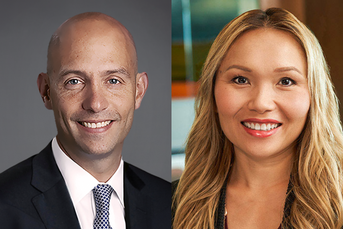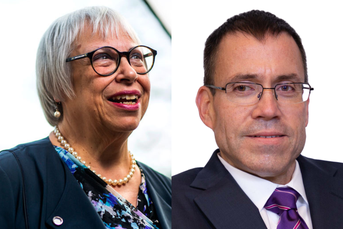Students failing on fin lit, but advisors can help

While nearly half of all states require financial education courses to be available, there are gaps.
The absence of financial education in schools is showing, with more than 60% of high school and college students failing basic tests, according to a report Friday from the Spark Institute and Corporate Insight.
The results show a glaring need for more programs in public schools – something that financial advisors can play a critical role in providing. Students who currently aren’t getting any financial education may be ill prepared to handle increasingly complex financial lives in adulthood. And of course, they might also be less likely to pursue careers in financial services.
On a five-question multiple-choice test covering credit scores, loans, retirement savings, investing and interest, 39% of college students got at least three answers right, compared with 37% of high school students, according to a statement from Spark.
“The financial services industry spends significant resources on educating employees on how to save and invest for the future. However, there is not enough focus on providing education to [help] high school and college age students build good financial habits early in life,” Snezana Zlatar, chair of the Spark Financial Literacy Committee, said in the group’s statement. Spark, a retirement plan industry trade group, is encouraging its members to help build financial literacy programs, share data and start partnerships with academic institutions and nonprofits. The group also wants more pressure on policymakers to expand financial literacy.
The report is based on data from a July survey of more than 900 high schoolers and 900 college students.
Along with the low average financial-literacy test scores, the report noted that high school students who showed higher aptitude about the subject were more likely to have parents who went to college, at 70%. Both high school and college students whose parents had higher education were more likely than others to have savings accounts.
But there was a disconnect in planning habits among college students, most of whom said they planned to incur large expenses over time, but many of whom had overdrawn accounts or had missed credit card payments, the report found.
Only 11% of high schoolers and 18% of college students said that their courses had prepared them to make good financial decisions. When asked where they turned for financial advice, the top responses were parents, the internet or social media.
However, elective financial courses have become more common in high schools in recent years. Currently at least 23 states require them to be offered, which means more than 70% of high school students in the country have access to them.
Still, more than half the states have no such requirements, putting students at a disadvantage later in life. For those lacking access to programs, there are opportunities for financial advisors to help.
Marianne Nolte, planner at Imagine Financial Services, gave presentations to students at her kids’ high school. Nolte had approached the principal about it, and the faculty was supportive of the idea.
“The kids were super hungry for it,” Nolte said. “We talked about very simple things like getting their first paycheck and what the taxes represent.”
She went over what types of accounts they could open and the benefits of starting to save early for retirement in IRAs. One student, surprisingly, had been issued a credit card without his parents’ knowledge – and Nolte told him about the risks and benefits of having one, along with instructions to inform his folks about the situation.
The presentations were well received, but there was high turnover at the school, and the new teachers and principal didn’t contact her about doing them in the future.
“I can see how something like this slips through the cracks when advisors make themselves available,” Nolte said. She has also given an eight-week financial education course to the special-needs community through D’Vine Path, a group whose mission is to teach life skills and vocational training to neurodiverse adults.
Another advisor, Andrew Ish, started volunteering to provide financial education in predominantly BIPOC communities, inspired by his participation in protests after George Floyd’s murder. Now he works with the Economic Awareness Council and teaches financial literacy to high school students.
“I wanted to make a positive impact in the lives of others, specifically through financial education. I hoped that my efforts could contribute to meaningful change,” Ish said in an email.
Working with students gives a whole new layer of meaning to his career, and the kids also help him stay more up to date on trends, he said.
Generally, many students benefit from help with budgeting, starting emergency funds, setting up low-fee bank accounts, avoiding high-interest debt and learning how to invest early for retirement, Ish said.
In addition to being rewarding, the volunteer work has another benefit, he noted. “It significantly helped me become more effective with my clients when discussing financial planning, investing, and tax concepts in a clear and understandable manner, avoiding standard industry jargon that can be challenging for many people to understand.”
Fixed income, foreign stocks offer big opportunities in 2024
Learn more about reprints and licensing for this article.








